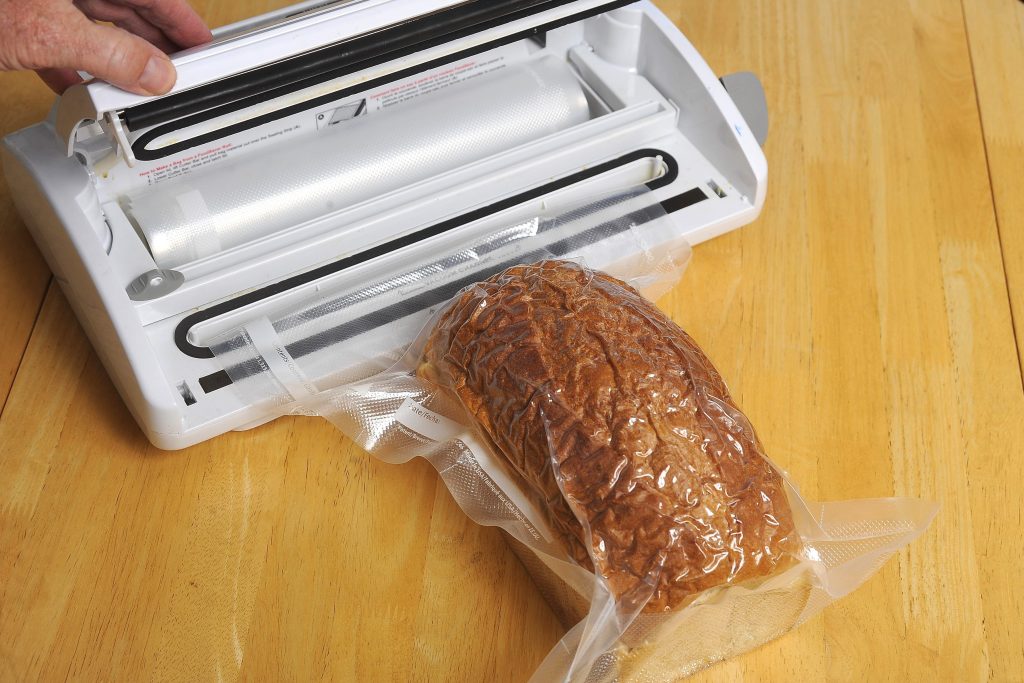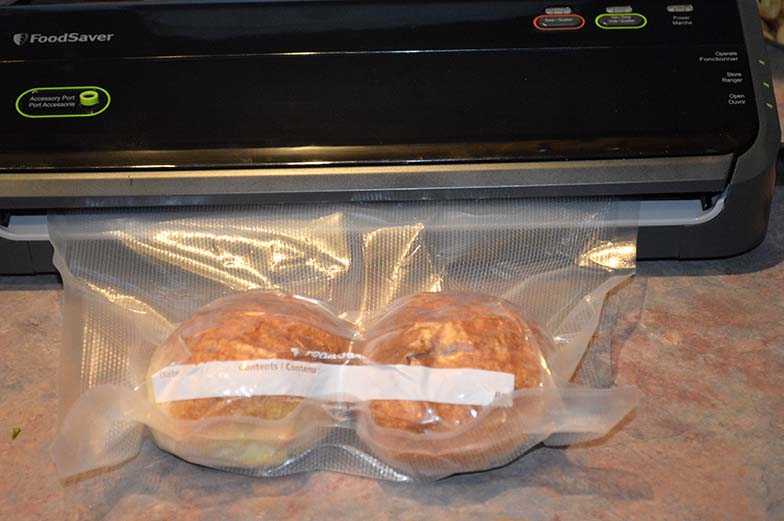Vacuum-sealing bread is a great way to keep your bread fresh for longer periods of time. By vacuum sealing, you can extend the shelf life of your favorite loafs and rolls, allowing you to enjoy them for months instead of days. But how do you actually go about vacuum sealing bread?
It’s not as complicated as it might sound! Let’s take a look at everything you need to know about storing bread with a vacuum sealer.

Table of Contents
Can You Vacuum Seal Bread?
Yes, you can vacuum-seal bread.
Vacuum sealing prevents air and moisture from entering the package, which keeps the bread fresh longer than traditional storage methods.
If your vacuum sealer has a pulse setting, that is recommended to help prevent crushing the bread, as it only briefly vacuums out the air.
What Is a Vacuum Sealer?
A vacuum sealer is an electronic device that removes air from plastic bags in order to create a tight seal around the food item inside. The result is an airtight package that locks in freshness and flavor. This process also prevents mold growth and helps preserve the nutritional value of food items for much longer than other storage methods.
How Do I Vacuum Seal Bread?
Vacuum-sealing bread is actually quite simple! All you need is a vacuum sealer, some freezer-safe bags, and the bread itself.
Start by prepping the bag with your desired length of seal and then place the bread inside. Make sure to leave enough room so that when it’s sealed, there isn’t too much extra space inside the bag that could get sucked up into the machine during the vacuuming process.
Once everything is in place, turn on your vacuum sealer and let it do its job! In just a few minutes, your bread will be perfectly sealed and ready for storage.
Read more: How To Keep Banana Bread Fresh?
FAQs
How long does vacuum-sealed food last?
Vacuum-sealed food can last anywhere from a few months to up to two years, depending on the type of food.
Generally speaking, most meats and vegetables can be vacuum-sealed and stored for around six months in the refrigerator or one year in the freezer.
Fruits can usually last between four and 12 months when vacuum-sealed and stored in the refrigerator.
Dried foods, like grains and nuts, can last up to two years when vacuum-sealed.
Vacuum sealing not only extends the shelf life of food but also helps preserve its flavor, texture, and nutritional value.
Additionally, it helps prevent food spoilage caused by bacteria, mold, or oxidation.
While vacuum sealing can help preserve food for longer, it is always important to check the expiration date on packaged foods and take appropriate precautions when consuming them. It is also wise to regularly inspect vacuum-sealed food for any signs of spoilage or contamination. By taking these steps, you can safely enjoy your vacuum-sealed food for several.

What foods should not be vacuum sealed?
Vacuum sealing can be a great way to extend the shelf life of foods and keep them fresh. However, there are some types of food that should not be vacuum sealed.
Hard cheeses, such as cheddar and Parmesan, should not be vacuum sealed because the lack of oxygen will cause mold to form on the cheese. Soft cheeses, such as Brie and Camembert, should also not be vacuum sealed as it will cause them to become too dry.
Fresh fruits and vegetables can be vacuum sealed, but they should not stay in the bag for more than a few weeks or the quality of the food may suffer. It is best to blanch vegetables before vacuum-sealing them to preserve their texture and color.
Raw meat, such as chicken, beef, and fish, should not be vacuum sealed unless it is cooked first. Otherwise, the food can spoil quickly due to the lack of oxygen in the bag. Cooked meats can be vacuum sealed for a few days after cooking but should still be eaten within a week.
Finally, pickles and olives should not be vacuum sealed as they are already highly acidic and the lack of oxygen will cause them to spoil quickly.
Overall, vacuum sealing can be a great way to store food for longer periods of time, but caution must be taken when choosing which foods to seal. Those that are listed above should not be vacuum sealed as the lack of oxygen can cause them to spoil quickly. Additionally, all foods should be eaten within a few weeks of vacuum sealing for optimal freshness and quality.
Conclusion
Vacuum-sealing bread is an easy way to ensure that your favorite loaves stay fresh for longer periods of time without compromising flavor or texture. With just a few simple steps—a vacuum sealer, some freezer-safe bags, and some delicious bread—you can have perfectly sealed loaves ready for storage in no time! So if you want to keep your baked goods fresher for longer periods of time, give vacuum sealing a try today!
References:








